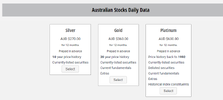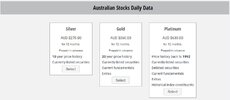Richard Dale
Norgate Data
- Joined
- 22 February 2005
- Posts
- 277
- Reactions
- 207
My advice is to thoroughly understand what is omitted from the entry-level data packages
Indeed - we offer multiple levels of packages. See below - I think it's pretty clear-cut from our descriptions but would certainly ask for feedback if this seems to be inaccurate/insufficient for systematic backtesting.
This is our current set of subscription levels (as at Sep 2023) for AU Stocks (and there are additional information web pages available too):

Last edited:





